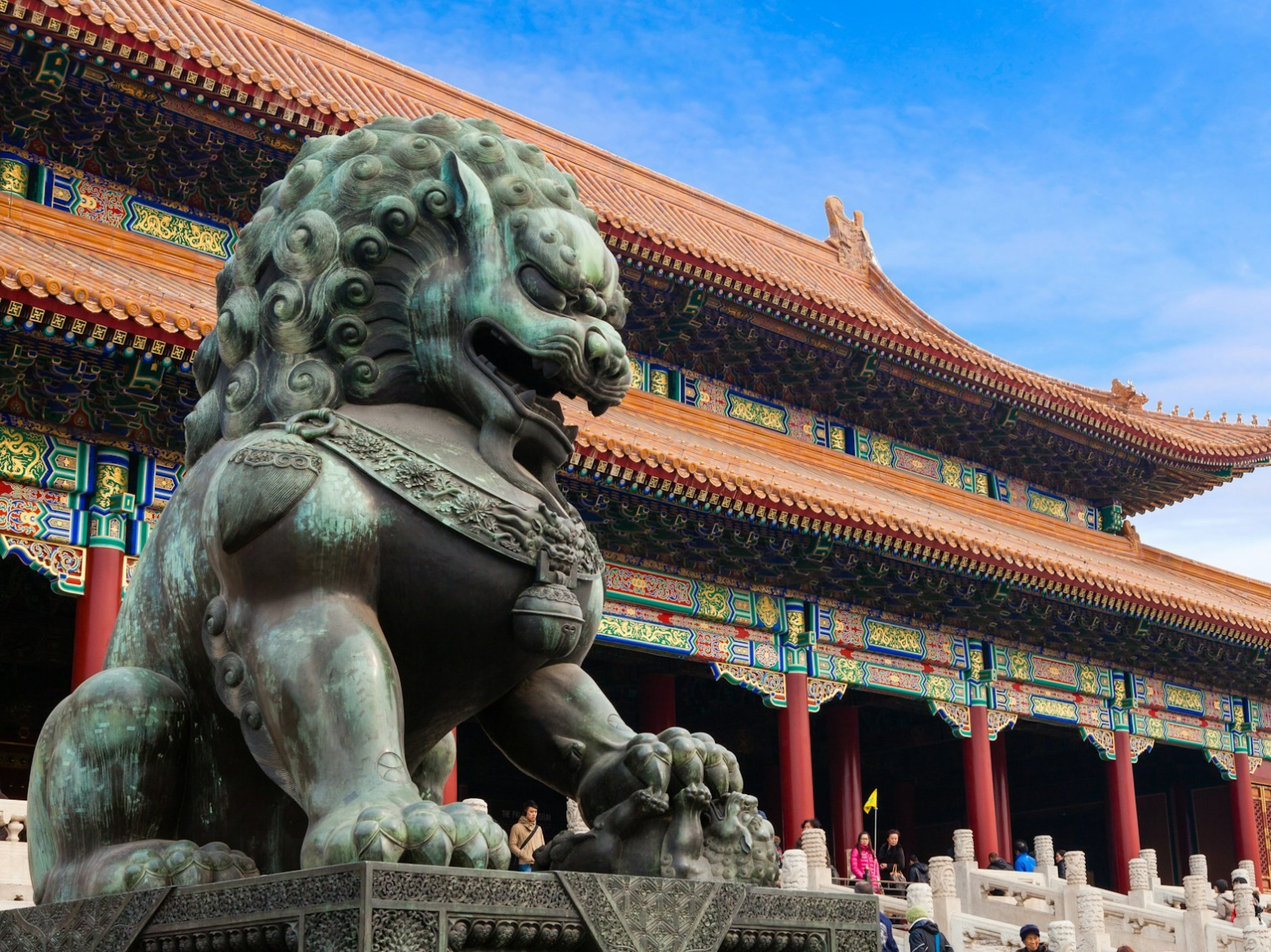This article is also available in Italian / Questo articolo è disponibile anche in italiano
If Trump is playing poker with the global economy, China seems to have engaged in a Go challenge.
In an heated and arrogant game of raising the stakes, on 9 April the US president made his global tariffs official, only to suspend almost all of them for 90 days. In the meantime, he raised those against China from 54% (the 20% already in force plus the 34% calculated with the notorious – and dubious – formula) to 104%, subsequently reaching an absurd 125%, which finally became a crazy 145% if accounting for the sanction for fentanyl.
In the face of Trump’s freak show, Xi Jinping and his ministers are taking an unshakeable position, announcing on 11 April an increase in tariffs of up to 125%. In addition, they explain that they will not raise them further because American products will no longer be marketable in China as they are. Certainly, the Chinese government has no intention of ”kissing Trump's ass”, to borrow an expression now mainstream in American diplomacy.
“If the United States insists on this path, China will fight to the end”, Trade Minister Wang Wentao announced a few days ago. So now the People's Republic is studying the situation, waiting and preparing for a long battle. As in Go, the ancient Chinese strategy game, patience and long-term vision are everything.
First move: setting the record straight
The first thing to do when preparing for a long battle is to prepare the field.
This is why the Global Times, an English-language newspaper linked to the Chinese Communist Party, anticipated the entry into force of the tariffs on the morning of 9 April by publishing a very long government position paper entitled China's Position on Some Issues Concerning China-US Economic and Trade Relations.
It would be an understatement to say China used this document to settle a few scores. The 40-plus pages of analysis insist on the fact that the People's Republic has always been the responsible party in the history of trade relations between the two powers. China is depicted as the party that has always fulfilled all its duties in bilateral agreements and that has suffered all the unjust and arbitrary treatment from the other party. At this point, it would be interesting to see how the US government respond to all the recriminations, but at the moment expecting anything other than ranting and threats from that side, it is a forlorn hope.
However, leaving aside the partiality of the point of view, the Chinese paper contains a lot of interesting objective data that help to understand the extent and complexity of China-USA economic relations, and most importantly the interdependence between the two countries.
First of all, the United States is currently the main destination for Chinese goods exports (14.7% of the total) and its second source of imports (6.3%), while China is the third destination for exports (7%) and the second source of imports (13.8%) for the United States.
Simply looking at these initial figures, the deficit Trump is complaining about could seem obvious. However, the raw data should be interpreted within a trend that says something different. According to UN statistics, since China joined the WTO in 2001, exports from the US to the Asian giant have in fact grown at a much faster rate than those to all other countries. In 2024, exports of US goods to China reached 143.55 billion dollars, an increase of 648.4% compared to 2001: this figure far exceeded the overall growth of US exports, equal to 183.1% in the same period.
In short, if this has been the trend over the last twenty years, it is fairly clear that putting up insurmountable barriers hindering free trade between the two countries is hardly the best strategy to sell more US products to the Chinese.
Another fundamental point is what exactly the two countries are trading. ”Bilateral trade between China and the United States is highly complementary”, the position paper emphasises.
Indeed China is the main market for US basic agricultural products, since it imports large quantities , for example, of soya and cotton.. It is also the second largest market for US integrated circuits and coal, and the third for medical devices, liquefied petroleum gas and (non-electric) cars.
On the other hand, the United States imports from China most of the pesticides used by its agricultural industry. They also buy machinery and electrical equipment, household appliances, furniture, toys (they are the world's largest importer) and plastics.
It will be difficult to find a replacement in a short time for most of these markets, and companies and consumers in both countries will suffer.
Second move: talk sense into the opponent
Once clarified the situation and the respective starting positions, the next step is to try to reason through the alleged wrongs caused and suffered.
The main ”wrong” denounced by Donald Trump is the trade deficit to the detriment of the United States. But what if the balance were substantially in equilibrium?
This is what the paper of the Chinese government argues, and to be fair, in the last two days other countries have also highlighted this point, including Singapore, with the clear yet measured words of Prime Minister Lawrence Wong.
Trump's estimates are based exclusively on the exchange of goods, and do not consider intangible assets, the trade in services. It seems absurd, in a society like the US (and the West in general) that is practically connected 24/7, and where most people are employed in the service sector, to “forget” all those goods that do not need to be transported in containers and ships to be traded. Yet, US exports of software services, tourism, study trips, the cultural and entertainment industry, and financial services have all been completely left out of Trump's calculations. This oversight seems anything but accidental.
Based on public data from the USDOC (the United States Department of Commerce), the Chinese government, , has therefore recalculated the figures. These include all the sectors left out and the local sales of branches of national companies in the other country (i.e. the Chinese branches of American companies, and vice versa).
These result in a significant deficit of China with the United States in terms of trade in services. This is concentrated mainly in three sectors: intellectual property royalties, transportation, and travel, including education-related travel (although in the last two months Trump has been trying hard to make Chinese students and researchers leave the US).
The two deficits – the American one for goods and the Chinese one for services – compensate each other, and the trade balance is thus substantially in equilibrium. In short, the Chinese say that, as things stand, there is no reason to rant so much and engage in a trade war that cannot have winners by its very nature: it would be better to look for a win-win solution.
Third move: prepare the weapons
Given that it is unlikely that Trump will be persuaded and since objective data and mathematics do not seem to interest him much, China is preparing its weapons for the fight.
China essentially has three aces up its sleeve: multilateral relations, rare earths and American debt.
The first two have already been partly deployed. Xi Jinping and his ministers are working tirelessly to strengthen ties with other Asian countries first, pursuing the vision of “an Asia for Asians” where American influence is increasingly minimised. The historic trilateral meeting on 30 March with Japan and South Korea should be interpreted in this sense. Similarly the tour of South-East Asia starting on 15 April will take Xi first to Malaysia (which holds the ASEAN presidency this year) and then to Vietnam and Cambodia - both heavily affected by Trump's tariffs before their temporary suspension. The repeated appeals and invitations to the European Union also falls within this strategy, and the cordial telephone call on 8 April between the President of the EU Commission Ursula von der Leyen and Prime Minister Li Qiang sent a significant signal in this direction.
As for the second trump card, China's near monopoly on rare earths (93% of global output) and its strong position in the supply chains of other critical minerals (copper, cobalt, lithium, graphite) is no secret. It is also no surprise that China uses export restrictions on these vital raw materials as a commercial weapon (for example, in December, it blocked the trade of three critical minerals to the USA, in response to US restrictions on the export of microchips).
So, while the surreal rise in percentages pushed by Trump has captured media attention in recent days, the export restrictions Beijing implemented in the aftermath of Liberation Day have been noticed less. These affect seven other minerals that are fundamental for sectors such as automotive, electronics and defence.
Finally, China still has one more weapon in its arsenal, riskier and more controversial: US debt. China is the second largest creditor to the United States in the world. After Japan, which holds more than a trillion dollars of US debt, and before the United Kingdom (722 billion), the People's Republic holds a whopping 759 billion dollars of US government securities.
Although US Vice-President JD Vance plays the tough guy, declaring on Fox News that Americans are tired of borrowing money from ‘Chinese peasants’, China might at some point decide to put the US securities it holds back on the market, with the intention of causing their depreciation and putting the US economy in trouble. Of course, it would all on how the market reacts. But is this a risk the United States can afford to take?
Cover: Rafik Wahba, Unsplash



